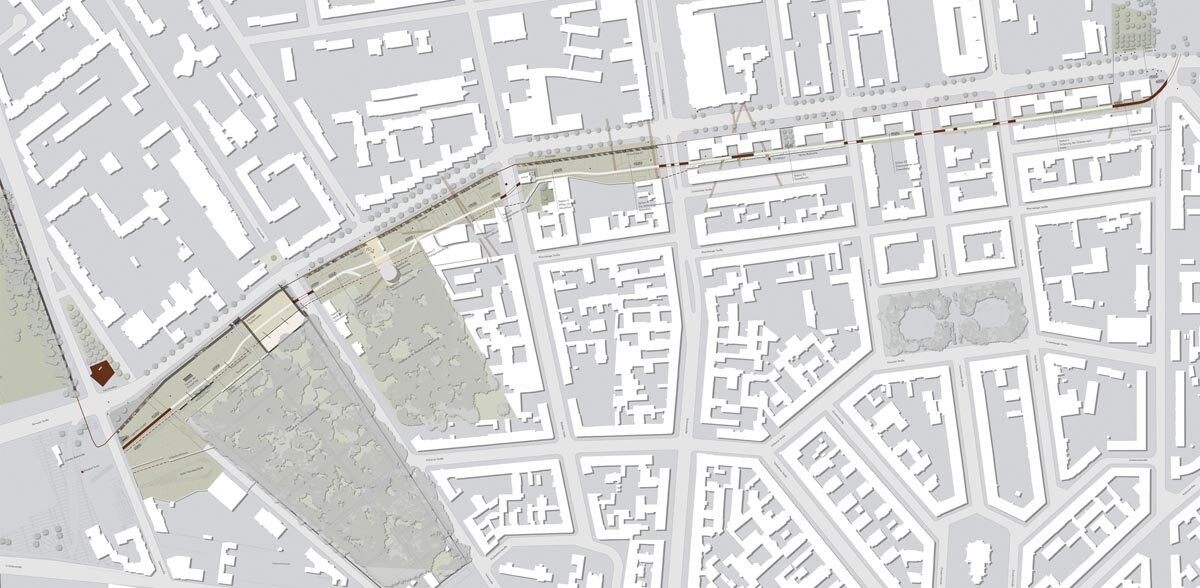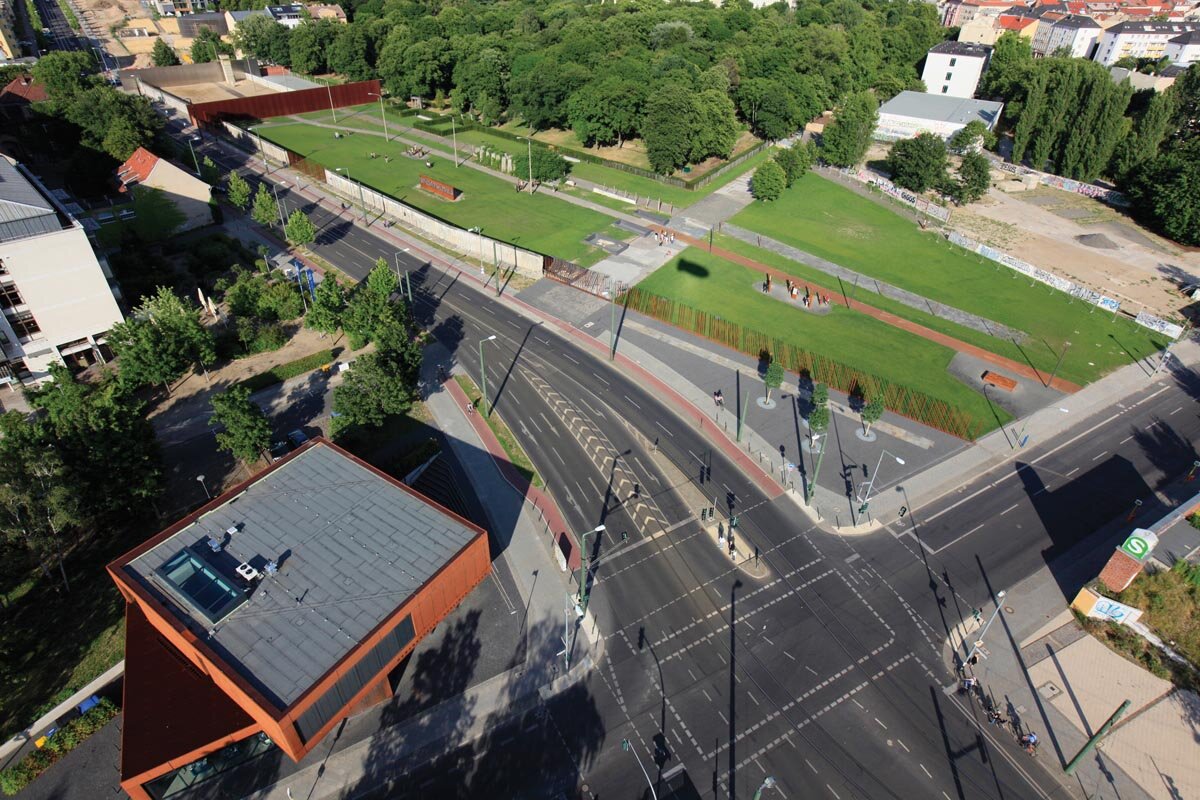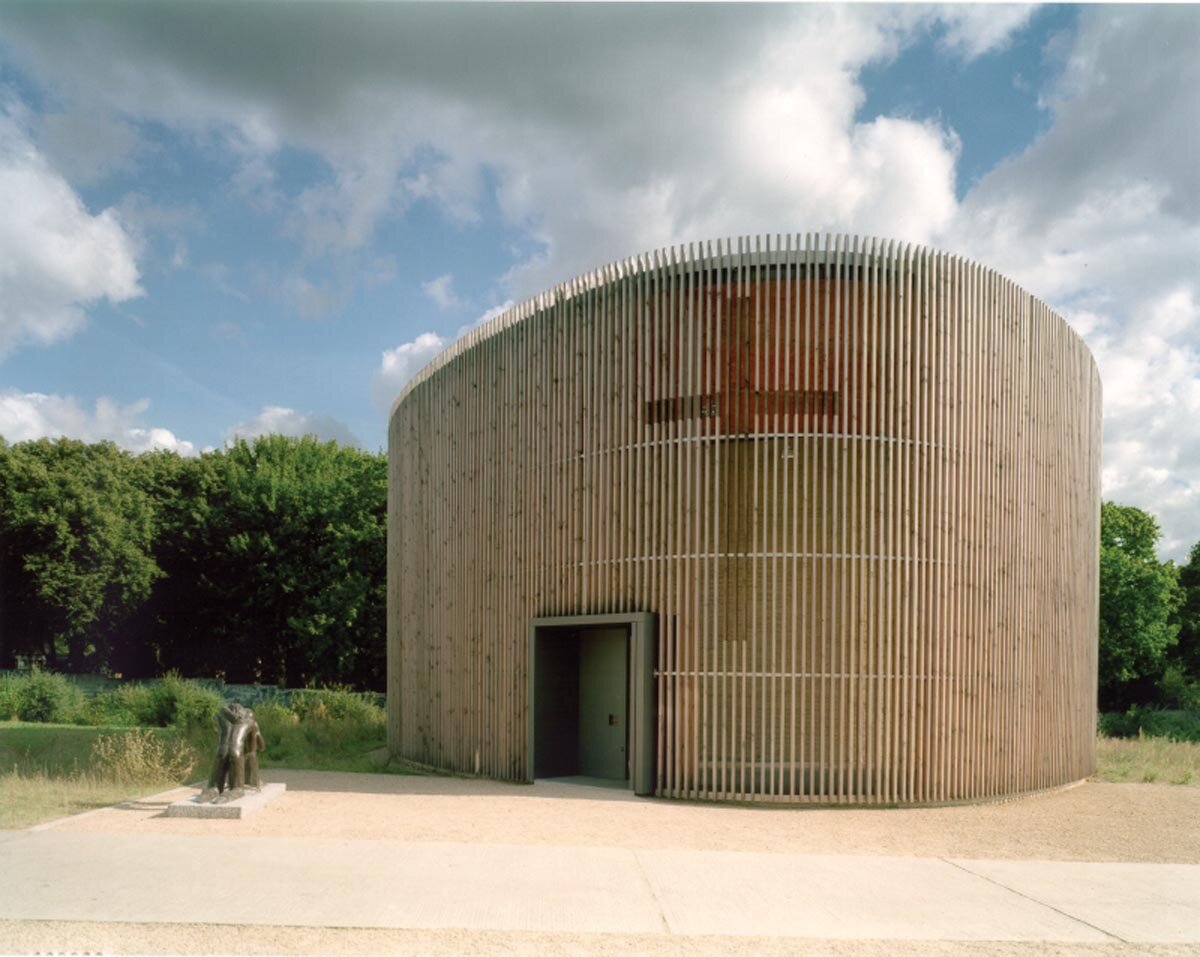De la căderea Zidului Berlinului la Memorialul Zidului Berlinului: povestea unui spațiu comemorativ intermediar | From the Fall of the Wall to the Berlin Wall Memorial: The Story of an In-between Commemorative Space

| În zilele noastre, ni se pare firesc să comemorăm Zidul Berlinului sau ca peste un milion de oameni să viziteze, doar în anul 2014, Memorialul Zidului Berlinului din Bernauer Strasse, încercând să-și facă o idee despre această structură monstruoasă. Însă aceasta este o impresie înșelătoare. Din felul în care a fost înființat memorialul reiese foarte clar că acest consens există doar de câțiva ani, fiind precedat de dezbateri lungi și dureroase cu privire la necesitatea unui astfel de sit în memoria celei de-a doua dictaturi germane și a victimelor sale.Totul a început cu o hotărâre luată la 29 decembrie 1989 și inițiată de guvernul interimar al RDG condus de Hans Modrow, care lansa un apel la demolarea imediată a fortificațiilor de la frontieră1. S-au exprimat totuși și alte păreri. Fostul cancelar Willy Brandt aducea argumente în favoarea „conservării unei bucăți din această structură abominabilă (…) pentru a împiedica uitarea”2 încă din 10 noiembrie 1989. Dar această inițiativă împreună cu hotărârea adoptată de Magistratul din Berlinul de Est la 2 octombrie 1990, de a proteja anumite secțiuni ale Zidului ca monumente istorice, nu s-au bucurat de succes. În schimb, în urma actului simbolic de demolare din 13 iunie 1990 a colțului dintre Ackerstrasse și Bernauer Strasse, eforturile de dărâmare a întregii structuri au câștigat în intensitate3.
Având în vedere natura intuitivă a dorinței de a dărâma Zidul, materializată în expresia „Zidul trebuie să dispară”, hotărârea Senatului Berlinului din 13 august 1991, de înființare a unui memorial în locația din Bernauer Strasse și de reconstruire a fortificațiilor multistratificate de la graniță – care fuseseră demolate doar cu câteva luni înainte – a fost, de asemenea, ineficientă. Doar cu eforturi majore și în ultimul minut au putut fi împiedicate trupele de la frontieră să aducă la îndeplinire ordinele de demolare a acestui tronson deja avariat al fortificațiilor de la graniță, iar „amatorii de bucăți din Zid” să mai cauzeze și alte pagube. (...) |
| Citiți textul integral în numărul 6 / 2015 al Revistei Arhitectura |
| Note: 1 Gerhard Sälter, Der Abbau der Berliner Mauer und noch sichtbare Reste in der Berliner Innenstadt, Berlin 2007, p. 7.
2 Peter Möbius, Helmut Trotnow (ed.), Mauern sind nicht für ewig gebaut – Zur Geschichte der Berliner Mauer, Frankfurt a.M/ Berlin 1990, p. 13. 3 Zidul interior, sistemul de semnalizare, unele dintre posturile și turnurile de pază din secțiunea cuprinsă între Ackerstrasse și Bergstrasse fuseseră deja demolate înainte de septembrie 1990. Anumite părți din turnul de pază au fost transportate în Muzeul Aliaților și remontate acolo într-o formă modificată (a se vedea „Ausschreibung Architektonisch-künstlerischer Wettbewerb Gedenkstätte Berliner Mauer în der Bernauer Straße”, 1994, p. 3 ș. urm.). În această secțiune au rămas intacte doar traseul patrulei și zidul de graniță. A se vedea, de asemenea, Ronny Heidenreich, „Eine Mauer für die Welt – Inszenierungen außerhalb Deutschlands nach 1989”, în: Klaus-Dietmar Henke (ed.), Die Mauer – Errichtung, Überwindung, Erinnerung, München 2011, p. 442 ș. urm. |
| Today, it seems perfectly natural for us to commemorate the Berlin Wall and that more than a million people visited the Berlin Wall Memorial at Bernauer Strasse in 2014 alone, just to form their own impression of this monstrous structure. It might also be misleading. The history of how the memorial was established states clearly that consensus has been reached just recently, for several years. A long, painful and controversial debate was necessary before the need to build a memorial site to remember the second German dictatorship and its victims was recognized.It all began with the Resolution of December the 29th, 1989, initiated by the GDR interim government headed by Hans Modrow, which called for the immediate demolition of the border fortifications.1 There were, however, other views. Former Chancellor Willy Brandt argued as early as November the 10th, 1989 for “preserving a piece of this abominable structure […] as a memory.”2 This initiative, however, along with the resolution passed by the East Berlin Magistrate on October the 2nd, 1990 to protect this and other sections of the Wall as an historic monument, remained unsuccessful. Instead, following the first symbolic act of its demolition on June the 13th, 1990 on the corner of Ackerstrasse and Bernauer Strasse, the efforts to tear down the entire Wall gained momentum.3
Given the more intuitive desire to tear down the Wall, expressed by the slogan “The Wall must go,” the Berlin Senate’s resolution of August the 13th, 1991 to establish a memorial site at Bernauer Strasse and to reconstruct the many-layers of border fortifications dismantled a few months earlier, was also ineffective. Only by great effort at the very last minute it was possible to hinder the border troops from carrying out their orders to demolish this already-damaged section of the border fortifications, and to stop the “wall peckers” from causing further damage to the Wall. (...) |
| Read the full text in the print magazine |
| Notes:
1 Gerhard Sälter, Der Abbau der Berliner Mauer und noch sichtbare Reste in der Berliner Innenstadt, Berlin 2007, p.7. 2 Peter Möbius, Helmut Trotnow (ed.), Mauern sind nicht für ewig gebaut – Zur Geschichte der Berliner Mauer, Frankfurt a. M/ Berlin 1990, p. 13. 3 The inner wall, signal fence, some of the lamp posts and watchtowers in the section between Ackerstrasse and Bergstrasse had already been dismantled by September 1990. Parts of the watchtower were moved to the Allied Museum and remounted there in an altered form (see Ausschreibung Architektonisch-künstlerischer Wettbewerb Gedenkstätte Berliner Mauer in der Bernauer Straße, 1994, p. 3 ff.). Only the patrol path and border wall were still completely intact in this section. See also Ronny Heidenreich, “Eine Mauer für die Welt – Inszenierungen außerhalb Deutschlands nach 1989,” in: Klaus-Dietmar Henke (ed.), Die Mauer – Errichtung, Überwindung, Erinnerung, Münich 2011, p. 442 ff. |


Memorialul Zidului Berlinului în Berlin-Mitte (secțiunea A) cu noul centru de vizitare (stânga jos) proiectat de Mola + Winkelmüller/ The Berlin Wall Memorial in Berlin Mitte (section A) with the new visitor center (left below) designed by Mola + Winkelmüller | © Berlin Wall Foundation/ Jürgen Hohmuth

Biserica Reconcilierii/ The Church of Reconciliation | © Reconciliation Church Community/ Verena Jaeckel